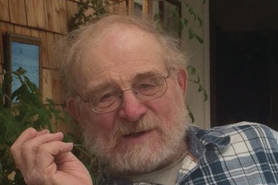By Larry Smith
For the Homer News
Remember the little children faced with the choice: Eat this one marshmallow right now, or wait eight minutes and you can have two? Some kids went for instant gratification, and so do some of Alaska’s legislators — they choose big Alaska Permanent Fund dividends right now. The governor leads them, with an eye on surviving recall and winning elections. To me, the future should be a protected permanent fund grown large enough to better pay for dividends and basic programs.
It’s the two marshmallow solution. Take less now and soon you will have a fund that has grown enough to provide more. The question is how we manage in the eight or so years it will take to get to the crossover point, where the fund can earn enough to do that. I say we should tough it out, with smaller programs and dividends (but never eliminate inflation-proofing), and tap the money Alaska now has in our many slush funds.
According to a state study (A Sound Fiscal Future, 2015), the total of all our other funds was $48 billion — nearly equal to the $53 billion size of the permanent fund at the time. These funds were set up when times were flush; we can’t afford them all, anymore. Flush funds equal slush funds.
We should first eliminate Alaska Industrial Development and Export Authority (AIDEA), Alaska Housing Finance Corporation (AHFC) and Alaska Department of Environmental Conservation (ADEC), folding the useful parts of their missions into existing agencies such as Departments of Commerce, Natural Resources, and Fish and Game. I would put half of all the money retrieved into the permanent fund, in order to grow the fund and grow the spendable earnings. We should also grow the fund by doing what Gov. Jay Hammond advocated, investing at least half of oil severance taxes, which now go entirely to the state general fund.
I do believe that the old and small territorial (later state) income tax is worth consideration. Remember, it’s a write-off from federal income tax, and it takes a reasonable share from the nonresident workforce (from fishing to oil field workers), who cost us in many ways without paying even property or sales taxes.
I want no back PFDs and no big PFDs. Instead, we should return to the good as gold standard PFD formula. Build the fund, and dividends will grow. Any change in program should, just as Hammond said, guarantee no reductions in PFDs. Grow the fund and there will be more dough for state services, as well.
The most important way to let the permanent fund grow is to get rid of the big-spending POMV (percent-of-market-value) and resume full inflation-proofing. The 5.25% POMV, on a five-year average, is way too high a take, and the statute allowing it included no protection to preserve the fund value. We could consider a 4% POMV, with restrictions such as exist in Norway, with their trillion-dollar-plus wealth fund, which was originally modeled on Alaska’s.
They take nothing from their fund unless its value increased the previous year; that’s zero take when the market calls for it. Prudent investors calculate that if we would take just 4%, in approximately eight years, our fund will have grown enough in market value to pay out more than if the fund had been raided by every legislature at 5%. At 5% POMV, said the recent director of the Office of Management and Budget, the fund will be unlikely to even keep present value, much less grow.
So there it is, fellow kids: One marshmallow now or two later?
Larry Smith is a builder in Homer.

